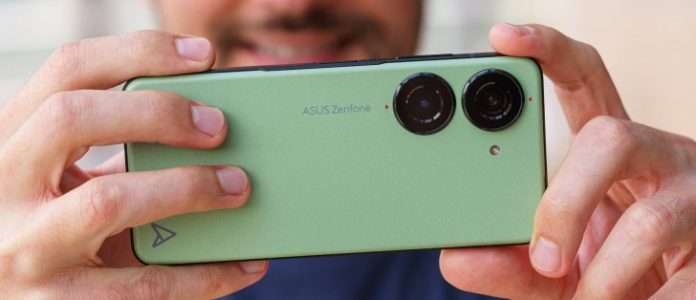Asus is best known for its computers and gaming gear, but it also launches a high-end smartphone under the Zenfone brand every year. The Asus Zenfone 10 is the most recent model, and it’s similar to the Zenfone 9 from 2022: an Android phone promoted as a tiny, compact gadget with an eye-catching appearance, high-end components, and careful software.
The Zenfone 10 is, for the most part, all of those things, however it is not the tiniest phone available. It’s taller than the iPhone 13 mini and iPhone SE, and it’s around the same size as an iPhone 14 with a smaller screen.
Don’t get me wrong: Asus has a good phone on its hands here; it checks almost every box on the spec sheet. As a result, the Zenfone 10 does everything well, but its display and camera aren’t top-tier.
Design & build
- Narrow design
- Paper-feel back
- Headphone jack
Asus hasn’t altered anything about the Zenfone 10’s design from the Zenfone 9. In reality, the measurements are the same at 146.5 x 68.1 x 9.4mm. That is smaller than many of the largest phones available, but it is not the tiniest.
The iPhone 13 mini measures 131.5 x 64.2 x 7.7mm, while the Samsung Galaxy S23 measures 146.3 x 70.9 x 7.6mm, making them both slimmer and shorter than the Zenfone. Even the standard iPhone 14 measures 146.7 x 71.5 x 7.8mm, which is just 0.2mm higher and 0.1mm thicker than the Zenfone 9.
I only bring this up because Asus touts the Zenfone 10 as a one-handed little phone miracle, yet it’s pretty similar in size to other high-end cellphones available internationally.
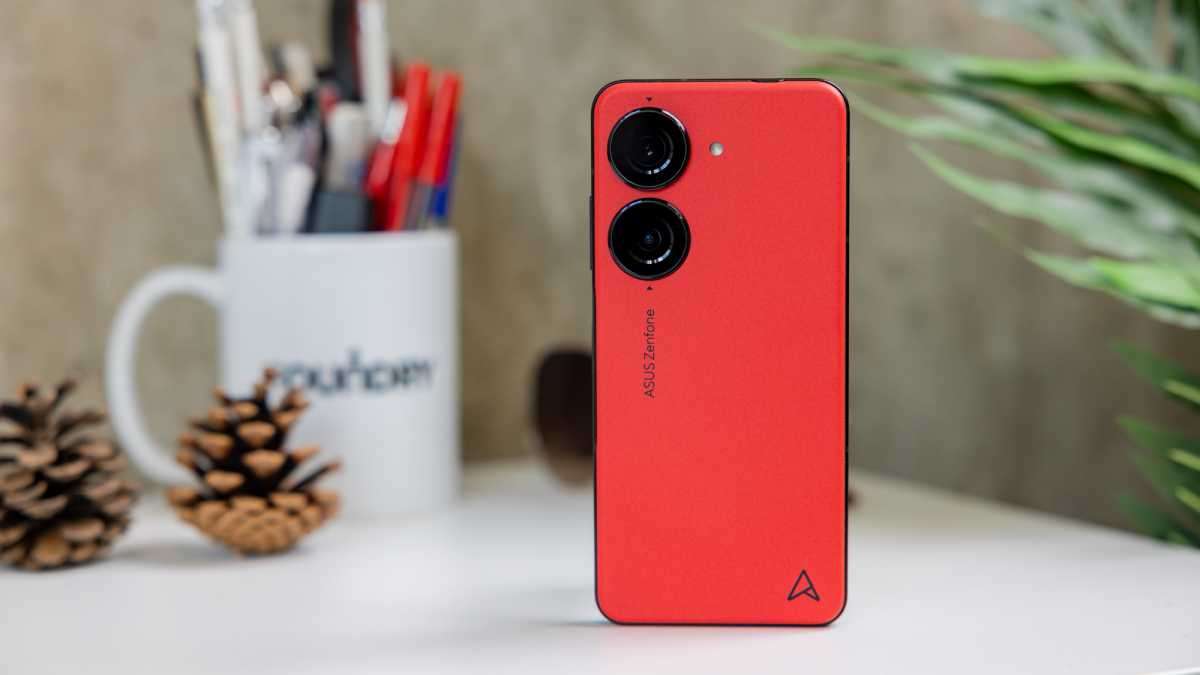
My review sample was the bright red-backed variant, but there are also green, white, black, and blue options. The back is comprised of bio-based polycarbonate and feels similar to hard paper to the touch.
It grew on me, but it won’t appeal to everyone. Neither will the prominent circular islands on the upper left of the back that contain the twin rear cameras. Under that, there’s some minor Zenfone branding, including a logo on the bottom right.
It’s more gripping and feels better than a glossy glass surface that attracts fingerprints, but I prefer the matt glass texture seen on the iPhone 14 Pro or OnePlus 11. The headphone port, which can power high-resolution wired music, makes up for it. There’s also a side-mounted power button with an embedded fingerprint sensor instead of one under the screen.
Asus markets the Zenfone 10 as some one-handed mini phone miracle, but it’s very similarly sized to other globally available high-end handsets
The phone is also dust and water resistant (IP58/IP68). This means it is resistant to dust, water jets, and immersion in water. It’s better than phones with only an IP68 classification, indicating that this is a phone that can withstand a few spills and survive.
Screen & speakers
- ‘Small’ 5.9in screen
- Up to 144Hz for gaming
- Dual stereo speakers
The Zenfone 10 features a 5.92in 2400x1080p OLED display. It’s fairly small, having a 20.4:9 aspect ratio, which makes it simpler to doomscroll with one hand.
It features a refresh rate of up to 144Hz. This is faster than the 120Hz seen on most high-end phones, such as the Samsung Galaxy S23 Ultra, and is a feature often found on gaming phones, which makes sense given that the Zenfone can only reach 144Hz in compatible games.
Otherwise, you may choose between 60-, 90-, and 120-Hz frequencies, or ‘auto,’ which alternates between these three to save power depending on what you’re doing.
It has a decent display, but it’s obviously pokier than, example, an iPhone 14, because it’s thinner than that and many other tiny competitors.

Given that the screen is relatively little by current standards, I didn’t miss having a better resolution. I wish it was a bit brighter; it has a peak brightness of 1,100 nits, but Asus claims it only has 800 nits of outside viewable brightness. In bright sunlight, the screen is difficult to read.
The two stereo speakers aren’t particularly impressive. They can get loud enough for podcasts, but given the size of the phone, they aren’t particularly full, and at high levels, they can sound pretty tinny.
Specs & performance
- Snapdragon 8 Gen 2
- Up to 16GB RAM
- Up to 512GB storage
The Snapdragon 8 Gen 2 is Qualcomm’s greatest smartphone processor to date. My review phone came with 16GB LPDDR5X RAM and 512GB UFS 4.0 storage, however depending on your location, you can also obtain 8GB/128GB and 8GB/256GB models.
Asus admirably went full kitchen sink with the specs of the Zenfone 10
The highest quality The Zenfone 10 breezed through everything I threw at it, handling all programs and demanding games like Call of Duty Mobile while remaining cool despite its small size. Models with 8GB RAM may perform worse, but I haven’t tested them.
Asus Zenfone 10 benchmarks
The Zenfone 10’s specifications are impressively comprehensive: 5G, NFC, Bluetooth 5.3, and Wi-Fi 7. It also supports high-resolution audio via the headphone jack and wirelessly using the LDAC codec, as well as aptX, aptX HD, aptX Adaptive, and AAC codecs. Audio is also tweaked in collaboration with Dirac. That’s a really remarkable list, with multiple improvements over the Zenfone 9, and you won’t find all of this on any other phone.
The only thing it lacks is a microSD card slot for extra storage. There are two physical SIM card slots, but no eSIM functionality.
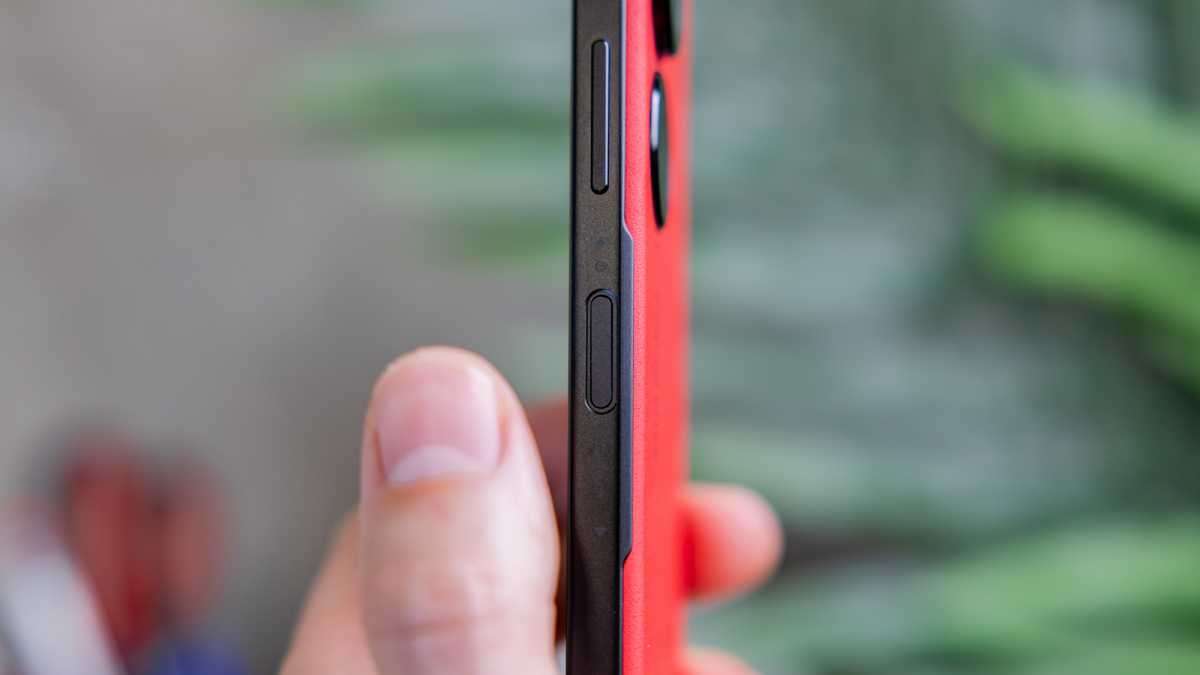
Cameras & video
- Inconsistent main lens
- Basic ultra-wide lens
- No telephoto
The cameras on the Zenfone were competent yet inconsistent. In daytime, the Sony IMX766 50Mp, f/1.9 primary sensor produces crisp, clear photos with good color reproduction. Low-light photographs are also effective, and high dynamic range (HDR) provides some interesting, vibrant images.
Its biggest fault is saturating colors, which Samsung phones also enjoy, and it issues with oversharpening. At times, the photos appear overly pale. Herve are a couple such examples:
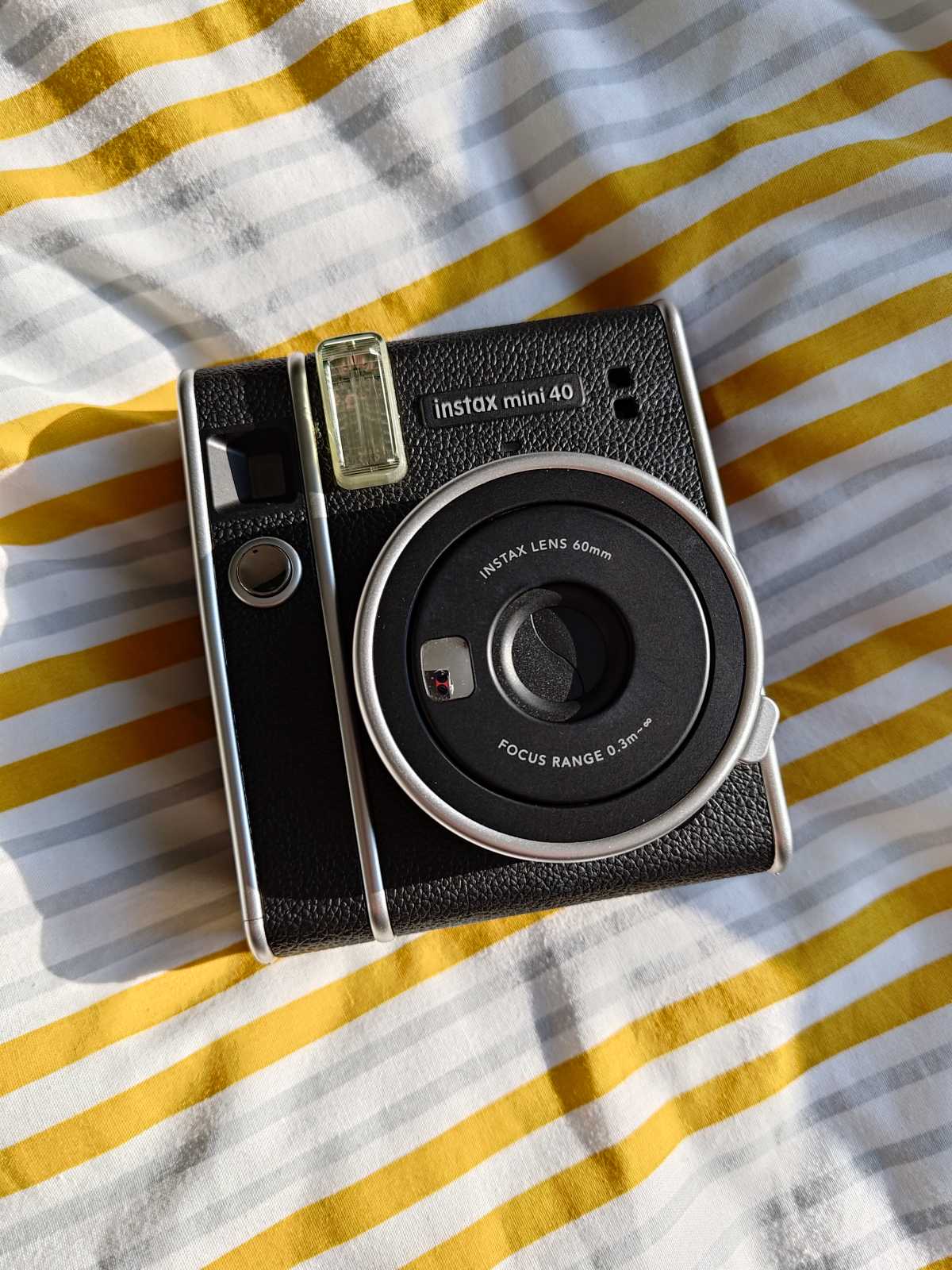



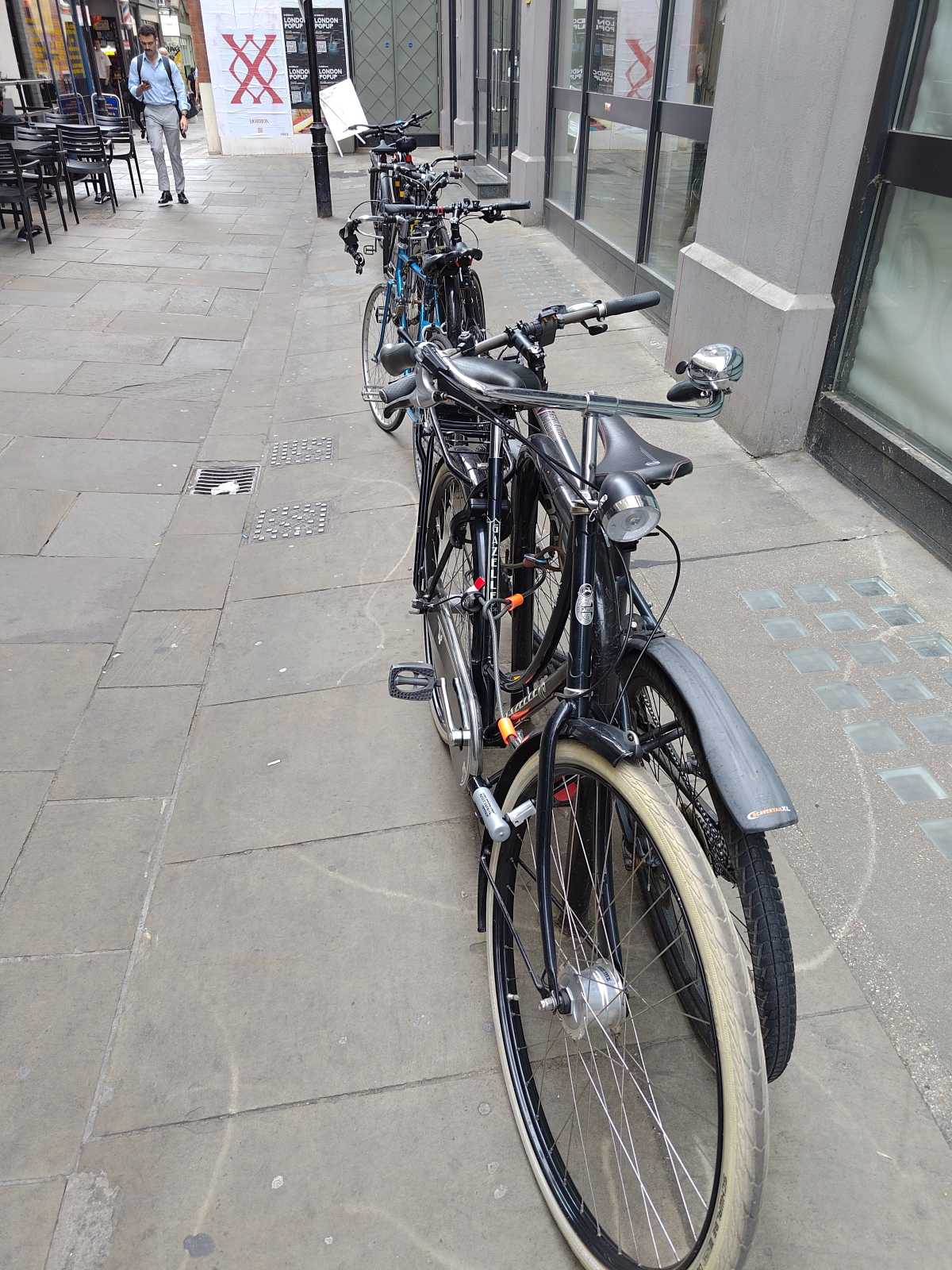
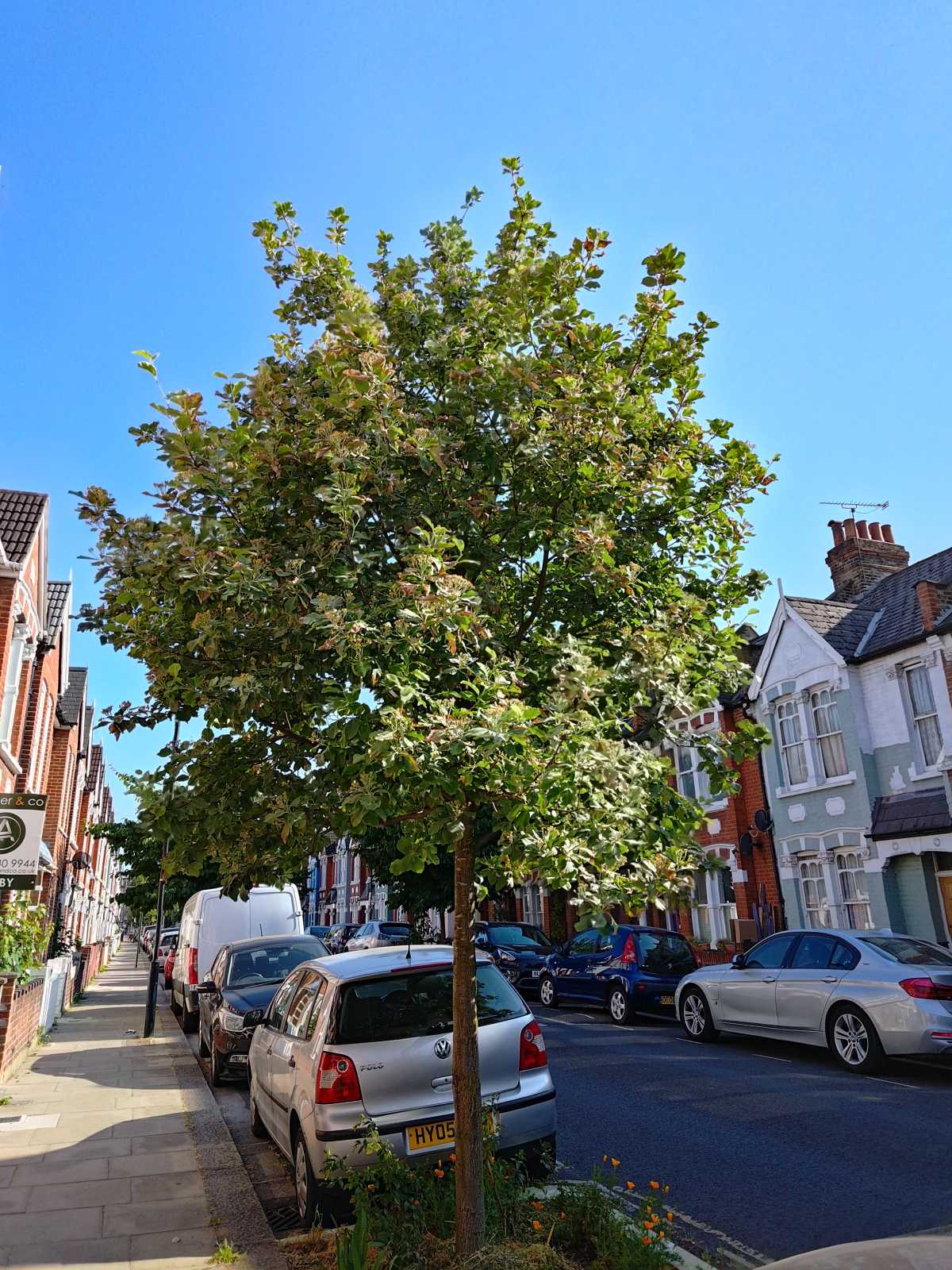
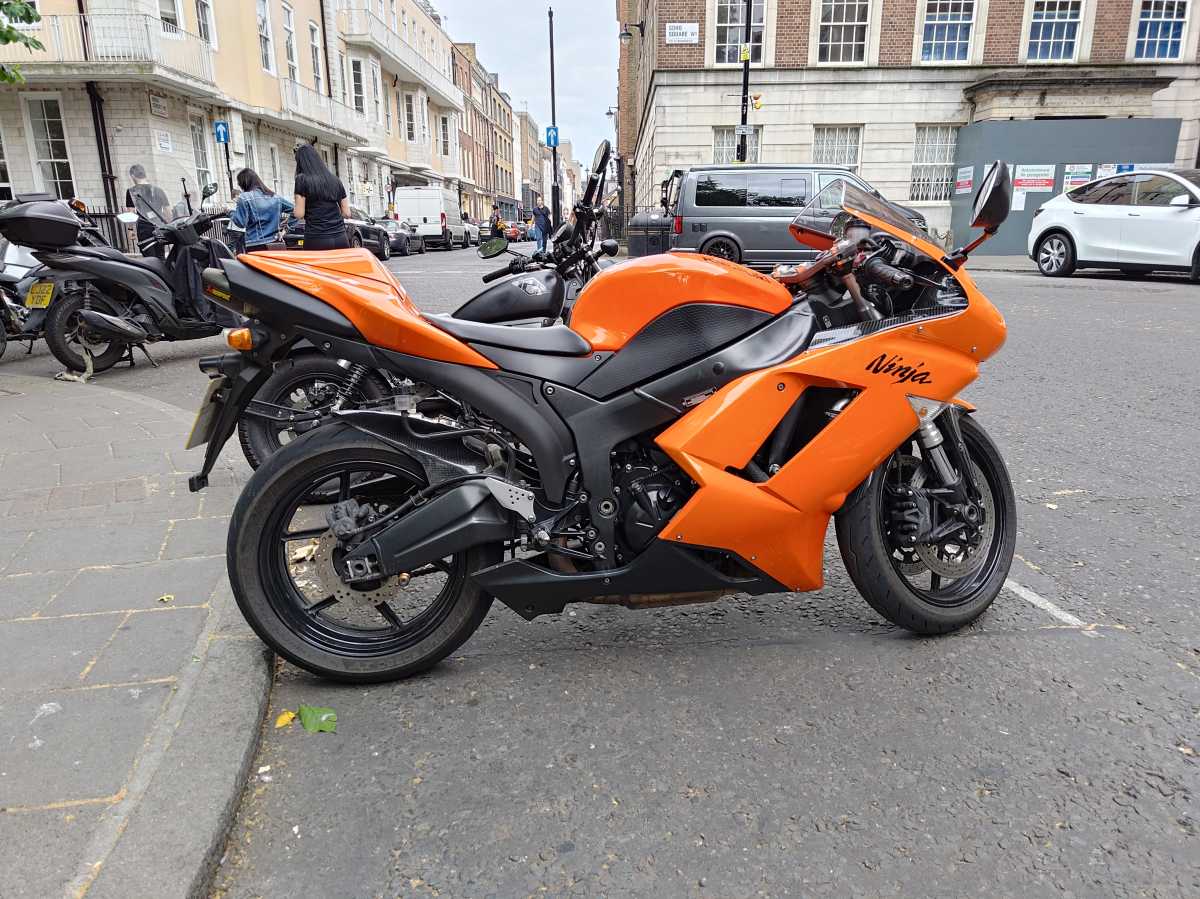
This is a common sensor featured in low-cost phones such as the OnePlus 10T and Nothing Phone (1). Given the Zenfone 10’s higher price, the camera is a poor feature. Better twin lenses may be found on the $799/£849/€1,019 iPhone 14 and the $499/£449/€509 Google Pixel 7a.
Because there is no telephoto lens, digital zooming is limited to the primary lens. In the camera app, there is a 2x button and an 8x button.
The 13Mp, f/2.2 ultrawide lens is enough for capturing more of a scene. The images are excellent enough to share with pals on WhatsApp, but they aren’t going to blow you away or make you want to post them on social media. When you zoom in, the colors are oversaturated, and there is a lot of noise.
The front-facing 32Mp camera, which pixel bins photos down to 8Mp, underwhelmed me. It was really better for short entertaining movies of groups, but images, were occasionally washed out and missing in depth. In comparison, the second selfie looks fantastic.
I found the Zenfone’s cameras solid but inconsistent
The true test of a phone camera is to take it to a significant occasion and see whether you are satisfied with the results. I took the Zenfone to a dear friend’s wedding, and while I got some beautiful images, I also got some bad ones, and I was disappointed with the experience of using it as my camera for the day. It made me want to avoid taking shots with my phone.
Video is fine, however I don’t take a lot of video with my phones. It can capture up to 4K at 60fps, and the results were excellent because to the gimbal stabilisation.
Battery & charging
- Excellent longevity
- Slow 30W wired charging
- Excellent software charging options
From a small letdown with the camera to being completely blown away with the battery life. I’m not sure what Asus is up to here, but the Zenfone 10 has no business surviving this long with a Snapdragon 8 Gen 2 processor and a 4300mAh battery.
Other premium phones, such as the Galaxy S23 Ultra, use the same technology but only last a day on 5000mAh batteries.

I tortured the Zenfone 10 starting at 8 a.m. on the day of the wedding, heavily utilizing Google Maps, the camera, and WhatsApp, until it died at midnight. That was the only way I could get rid of it.
On most other days, by 11 p.m., I had reached 40% or so. It’s one of the phone’s better features, and it demonstrates that smaller phones can have decent battery life.
I don’t know what wizardry Asus is doing here, but the Zenfone 10 has no right lasting this long
It’s a good thing it lasts so long because charging with the provided 30W corded charger is painfully sluggish. It just took 15 minutes to get from 0% to 18%, and half an hour to get to 35%.
There are also excellent charging options in the software, such as high performance, dynamic, durable, and ultra durable modes, three of which can be programmed to kick in when the battery reaches your desired level, scheduled charging to slow charge at specific times to protect the battery, and steady charging to always charge it slower.
Software & updates
- Very customisable
- Clever additions to Android
- Only two Android OS updates
The Zenfone 10 runs Android 13, but Asus promises just two upgrades to get it up to Android 15 by 2025. This isn’t ideal, and it falls short of Google, Samsung, Apple, and Oppo.
It partially compensates by offering four years of security fixes until 2027, but there’s no assurance they’ll be monthly.
Asus has so many adjustable choices that it might be intimidating. The Android skin is quite simple, closer to’stock’ Android than Google employs on Pixel devices. The only software that is replicated is Asus’s Gallery; otherwise, Asus just let you to use Google’s applications for everything.
You may run the standard appearance or select ‘Asus optimised’ aspects such a different quick settings design, power button menu, clock size, incoming call display, and volume adjustment choices. The side key can also be configured to respond to swipes; I used it to swipe down the notification shade, but you could get creative and use it to scrub back and forth across YouTube videos.
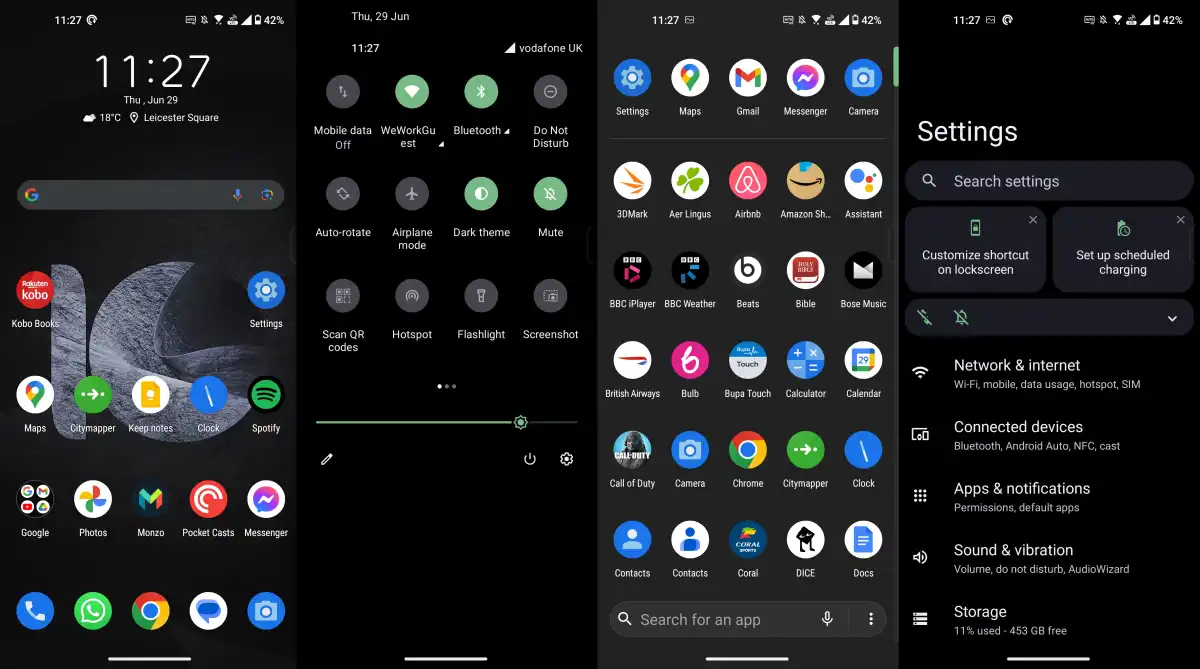
The Zenfone 10 inherits the Game Genie software featured in Asus’s ROG gaming phones, despite not being a gaming phone. Gestures are also fantastic – drawing letters on the locked screen to access certain applications, switching to mute, and double pressing to lock on the home screen are all available.
However, due to the phone’s narrowness, apps may seem little cramped. Even though I have small hands, the Gboard software keyboard seems squeezed, so I modified the settings to make the keys larger. This phone makes it difficult for me to type swiftly.
The default text size is also weeny and although you can enlarge it, you’ll fit less on the screen. If you need reading glasses or struggle with small text, this isn’t the phone for you.
Price & availability
The Asus Zenfone 10 costs from £749.99/€799. It’s available to pre-order now in the UK direct from Asus until 31 July.
The phone will be available in the United States in Q3 of this year. However, no pricing or release date has been revealed.
The phone is positioned as a premium handset akin to the $799/£849/€799 Samsung Galaxy S23 and the $799/£849/€1,019 iPhone 14. It costs almost the same as the $699/£729/€849 OnePlus 11, however I believe the OnePlus is a better buy because to its superior cameras, software support, and charging speeds, unless you need the tiny form factor.
Verdict
The Zenfone 10 is an excellent phone with a spec list that has everything you could want. It has an incredible battery life, top-tier performance, a headphone port, and some of the most customizable software available, all in a phone that fits in most pockets.
Despite this, it’s a high-priced phone with inferior cameras. If you don’t care about having the finest phone camera, you won’t worry, but the Google Pixel 7a offers a superior shooter for a much lower price.
Asus should also improve its software support. A phone with a Snapdragon 8 Gen 2 will last at least five years, but Asus promises just two Android version upgrades and four years of security fixes.
If you don’t care about Android’s newest features, this is still a terrific tiny phone with incredible battery life.
Specs
- Qualcomm Snapdragon 8 Gen 2
- 8/16GB LPDDR5X RAM
- 128/256/512GB UFS 4.0 storage
- 5.92in 144Hz AMOLED display
- Camera:
- 50Mp, f/1.9 Sony IMX766 main camera with OIS & gimbal-stabilisation
- 13Mp, f/2.2 ultrawide camera
- 32Mp, front-facing camera
- 4300mAh battery
- 30W wired charging
- 15W wireless charging
- Dual stereo speakers with Dirac HD Sound
- USB-C
- Headphone jack
- Wi-Fi 7
- Bluetooth 5.3
- Dual-SIM
- Sub-6GHz 5G
- IP68 rating
- Gorilla Glass Victus display
- 146.5 x 68.1 x 9.1 mm
- 169g
- Android 13 with Zen UI


